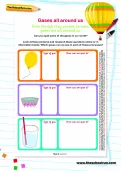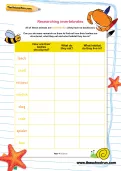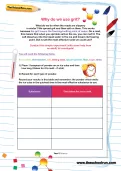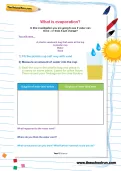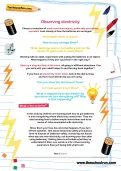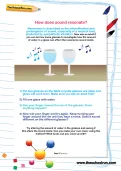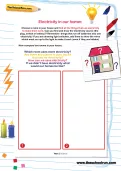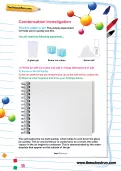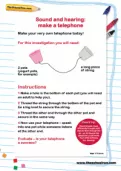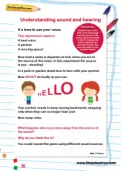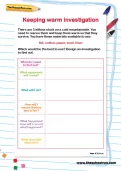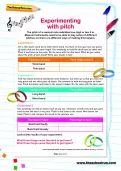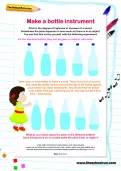Gases are all around us, but they can be hard to spot! Help your child work through this investigation into the gases we can see and what they're used for.
or
Register to add to your saved resources
Already a subscriber? to view this content.
A practical investigation into pitch and how sounds change in different conditions.
or
Register to add to your saved resources
Already a subscriber? to view this content.
All of these animals are invertebrates (they have no backbone). Can you do some research on them to find out how their bodies are structured, what they eat and what habitat they live in?
or
Register to add to your saved resources
Already a subscriber? to view this content.
When the roads are slippery in winter we spread grit and then salt on them. But is salt the most effective solid we could use? Conduct this simple experiment to investigate!
or
Register to add to your saved resources
Already a subscriber? to view this content.
In this investigation you are going to see if water can move – or does it just change?
or
Register to add to your saved resources
Evaporation is the process by which a liquid such as water turns into a gas. In this simple experiment you will investigate how this process takes place.
or
Register to add to your saved resources
Already a subscriber? to view this content.
Unfortunately human activities can have negative impacts on habitats and the animals that live in them. This investigation will help you to understand the impact of an oil spill on our ocean habitats.
or
Register to add to your saved resources
Already a subscriber? to view this content.
Choose a selection of small electrical objects, preferably two-battery operated. Look closely at how the batteries are arranged. Open up a plug and look at the wires, all going in different directions. Can you work with your adult helper to put the plug back together? If you have an electricity meter clock, look at the dial turning and how much electricity you are using.
or
Register to add to your saved resources
Already a subscriber? to view this content.
Resonance is described as the intensification and prolongation of sound, especially of a musical tone, produced by sympathetic vibration. Now ask an adult if you can borrow some glasses to investigate how the amount of water in a glass can affect the resonance sound made.
or
Register to add to your saved resources
Already a subscriber? to view this content.
Choose a room in your house and find all the things that use electricity to make them work. Can you find and draw the electricity source (the plug, switch or battery)? Remember: things that run off batteries also use electricity! If you are drawing light switches, add lines to show the wires which must run up to the light to make it work (even if they are hidden)
or
Register to add to your saved resources
Already a subscriber? to view this content.
There is water in air! This simple experiment will help you to quickly see this.
or
Register to add to your saved resources
Already a subscriber? to view this content.
Have fun with your child whilst they learn more about sound and its properties.
or
Register to add to your saved resources
Your child will have tons of fun doing this experiment whilst learning all about sound and hearing.
or
Register to add to your saved resources
This worksheet prompts your child to think about how they would plan an investigation into keeping warm.
or
Register to add to your saved resources
Already a subscriber? to view this content.
Suggestions for activities to try at home to help your child investigate factors that affect pitch.
or
Register to add to your saved resources
Already a subscriber? to view this content.
An activity to encourage children to think about how the amount of air in an instrument affects the pitch it makes.
or
Register to add to your saved resources
A worksheet describing a prediction regarding changing state with questions for children to think about, using their investigative skills.
or
Register to add to your saved resources
